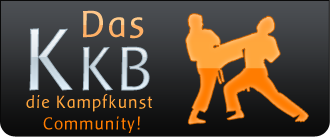Yú Mén Quán "Yu Gate Boxing"
A.K.A. Yú Jiā Quán "Yu Family Boxing"
Shown here is Yu Men Quan as it is practiced by the martial descendants of Yu FaZhai who taught during the Republican period in Ziyang prefecture and Chongqing.
This style comes from the Tujia* (ethnic group) Yu family of NanBa town in Xuanhan county, Dazhou prefecture, Sichuan province.
During the end of the Han dynasty / 3 Kingdoms period the famous physician Hua Tuo was killed by the warlord Cao Cao. His disciples fearing for there lives decided to take a journey to Yunnan province to "collect herbs". On the way there they passed through Xuanhan county and stayed at the farmstead of the Yu clan. The head of the Yu clan at the time was bedridden and severely ill, in thanks they taught him the Five Animal Frolics created by their teacher. When they returned the next year they found that he had survived and recovered his strength thanks to their instruction. They stayed there for a time teaching him more their master's medical system.
This began the Yu family's tradition of medicine and Qigong. some centuries later the family began to practice boxing. Xuanhan is located near a pass leading from the Sichuan basin to the head of the Yellow River valley, there for most of the traffic from northern China into Sichuan passed through that area. Because of this the martial arts in the area have absorbed the features of many styles over the centuries.
Within the Yu family the martial arts learned from local masters and various travelers were over time combined with the Yu clan's ancient Five animal frolics and medical knowledge.
Though the family has been known for boxing since Song times it is said that unique Yu family style was not systematized untill the early Ming dynasty.Within the family it was referred to as the "Yu Family Passed Down from the Ancient Ancestors Boxing". The rules of transmission were simple, only teach it to family members, never teach it to anyone outside the direct family line, only teach it to men, never teach it to women.
It was not until the mid-late Qing dynasty when famous doctor and boxing master Yu YouFu began to take disciples from outside the family, teaching them his families martial arts and medicine. Since that time the style has become famous and is practiced across Eastern Sichuan and Chongqing. There are many tales of the bravery and skill of the masters of this style and during the late 19th and early 20th century the Yu family style boasted many of the best fighters in the region. Since that time it has evolved into several branches and can be called Yu Men Quan or Yu Jia Quan depending on the area, lineage, or just the individual.
The Yu family's teachings consist of over 80 forms of boxing and weapons along with hard Qigong and conditioning practices, martial Qigong, medical Qigong, Accupoint striking methods, herbal medicine, and acupuncture.
*The TuJia are a distinct ethnic group living in Chongqing, parts of eastern Sichuan, western Hunan, and northern Guizhou.
Their name means "Native People" and they are thought to be the descendants of the ancient Ba people who lived in the area until around 300B.C. when their kingdom was destroyed by the Qin. The Ba were famous for their fierce warriors who fought with curved blades and used bronze drums for directing battles. Even today many Tujia people still worship the White tiger god of the ancient Ba people.
Like the Ba the Tujia were known for being skilled warriors and during the Ming dynasty Tujia units in the imperial army helped to fight off the Japanese pirates occupying the coast.





 Mit Zitat antworten
Mit Zitat antworten